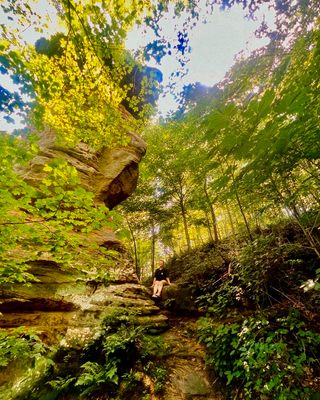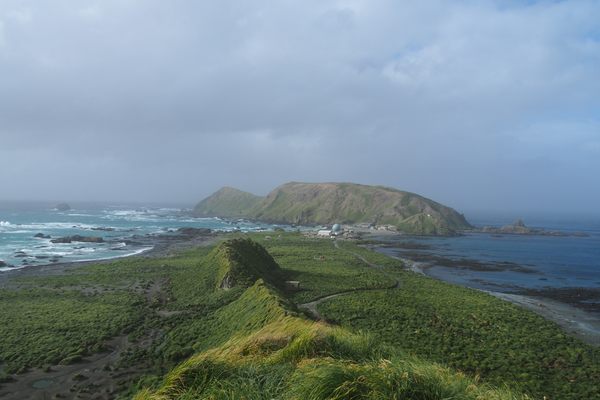About
Things that look weird get names. That was just as much the case 150 years ago as it is today, if not more so. Sorry, nameless rock overhang in Springfield - you're just too normal. So is that faceless riverbed in Anderson. You have to be something really special to get a name that sticks, like Jug Rock in Shoals, Indiana, for example.
Jug Rock is a table rock formation oddly set in the gentle woodlands of south central Indiana, so named because it looks like a jug, and geologically classified (some would say more appropriately) as a "table rock" formation because it looks (some would say more accurately) like a table.
The formation is believed to be the largest freestanding table rock east of the Mississippi River, in large part because rock formations like this just don't occur in the eastern United States. The natural forces of erosion - rushing rivers, windy plains, a lack of plants - that create such spectacular scenery in the western states typically don't have much impact on the dense woodlands and rolling hills common in the east.
What's more, if a formation does occur, geologists can pretty much count on it having a limited shelf life. Extreme climate fluctuations (wet, humid summers; freezing, snowy winters), and a wealth of meddling vegetation that works its way into every forested nook and rocky cranny will typically work to knock down anything oddly shaped.
Thus the intrigue of Jug Rock - standing silently and alone in the midst of a quiet forest, with no telling rivers, open fields or companion rocks in sight. The strange formation has long been a local oddity and a source of pride, with the Shoals high school even making Jug Rock their mascot.
The surrounding area is a protected forestland tangential to the Hoosier National Forest, and geologists have named the area surrounding it the Mansfield Formation, but anyone who's been there will tell you that's just a fancy name - there's nothing else like Jug Rock in these commonplace woods. Thus the happy, potentially fleeting, mystery of Jug Rock.
Related Tags
Know Before You Go
North edge of town, on the north side of US Hwy 50. Drive slow. You'll see a street sign for Albright Lane. Pull off the highway there and park in the tiny gravel turnoff (there's really only room for one car at a time). Do not pull up the driveway, as it is private. Only then will you see Jug Rock back in the trees, and a tiny directional sign, "Jug Rock," with an arrow, that you would never see at highway speed. A path leads through the trees to the Rock. Once you park, Jug Rock is visible and accessible down a steep embankment.
Community Contributors
Added By
Published
April 22, 2012














































